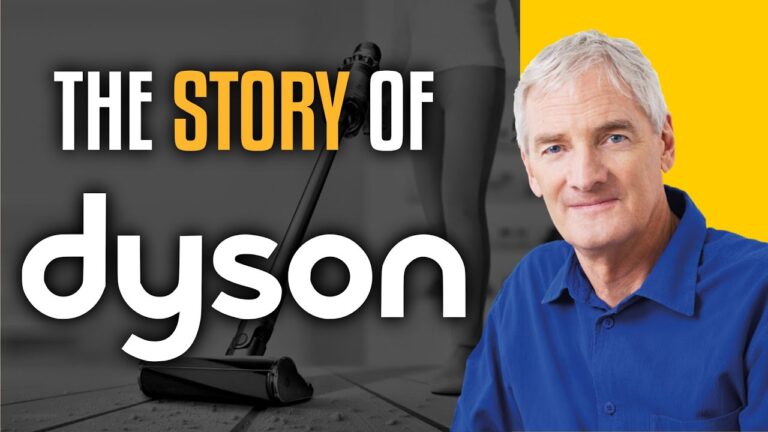The Ultimate Story of Dyson
Based on Public Facts
Dyson Limited, commonly known just as Dyson, is a Singaporean multinational technology company founded by James Dyson. First established in 1991 at Malmesbury, England, it designs and manufactures household appliances such as vacuum cleaners, air purifiers, hand dryers, bladeless fans, heaters, hair dryers, and lights. As of February 2018, Dyson had more than 12,000 employees worldwide.
Move to Singapore
In 2019, Dyson announced the company’s permanent move to Singapore – its headquarters are located at the St James Power Station, across the island of Sentosa. Ever since, the company has conducted its base of operations out of Singapore, with its headquarters being the hub for Dyson’s research and engineering teams, as well as commercial, advanced manufacturing and supply chain operations.
S$1.5 billion Investment in the country
In 2022, Dyson announced that it would be investing a further S$1.5 billion in the country. In January 2019, it was announced that Dyson intends to manufacture its own electric vehicle (EV). However, the termination of the EV programme was announced later that year on 10 October 2019, citing that it was not “commercially viable” at this time. Nevertheless, a prototype of the EV was unveiled in 2020, known as the N526, and it is now showcased within their headquarters.
History (Early Years of Dyson based on Public Facts)
In 1974, James Dyson bought a Hoover Junior vacuum cleaner, which lost suction after a period of use. Frustrated, Dyson emptied the disposable paper bag to try to restore the suction but this had no effect. On opening the bag to investigate, he noticed a layer of dust inside, clogging the fine material mesh.Later, Dyson was working on his ballbarrow at a company he had founded (but no longer entirely owned) where a large vacuum system was used to contain the fusion bonded epoxy coating that was sprayed on the wheelbarrow arms as a powder coating.
Motivation to Build a Better Vaccum
Dyson found the system inefficient, and was told by equipment manufacturers that giant cyclone systems were better. Centrifugal separators are a typical method of collecting dirt, dust and debris in industrial settings, but such methods usually were not applied on a smaller scale because of the higher cost. He knew sawmills used this type of equipment, and investigated by visiting a local sawmill at night and taking measurements. He then built a 30-foot model for the ballbarrow factory.
Firing of Dyson
While constructing this at home, Dyson realized the function of the cyclone was to extract dust without clogging. Wondering if this could be applied at a smaller scale to a home vacuum, he constructed a cardboard model with sticky tape, connected it to his Hoover with its bag removed, and found it worked satisfactorily. The directors of the ballbarrow company thought if a better vacuum was possible, Hoover or Electrolux would have invented it. Dyson was undeterred, and was kicked out of his company.
Dyson Develops Number of Protoype Designs
Jeremy Fry provided 49% of the investment for cyclonic vacuum development, and the rest came from a loan. In the shed behind his house, Dyson developed 5,127 prototype designs between 1979 and 1984. The first prototype vacuum cleaner, a red and blue machine, brought Dyson little success, as he struggled to find a licensee for his machine in the UK and America. Manufacturing companies such as Hoover did not want to license the design, probably because the vacuum bag market was worth $500M and thus Dyson was a threat to their profits. The only company that expressed interest in the new cyclonic vacuum technology was Dyson’s former employer, Rotork. Rotork was the first publicly sold vacuum cleaner of Dyson’s design. Only about 500 units were sold in 1983.
There’s no mistaking a Dyson vacuum when you see it. Whether you’re using an upright ball vacuum, a handheld Cyclone, or a motorhead vacuum, there’s something distinctive about their design. And even refurbished, many find them the best on the market. But the sleek and transparent vacuum we have today is a far cry from the cardboard and duct tape prototype built by a man who had been such a terrible student that his headmaster wondered what he’d do with his life.It took more than 5,000 prototypes and near-constant financial debts and the threat of bankruptcy for Dyson to go from a company on the brink, to “outselling its competitors 3 to 1”, and bringing in billions of dollars every year. This is the story of Dyson.
Hook
Founding of Dyson Appliances Limited
In 1985 a Japanese company, Apex Ltd., expressed interest in licensing Dyson’s design and in March 1986 a reworked version of the Cyclon – called G-Force – was put into production and sold in Japan for the equivalent of US$2,000. In 1991, it won the International Design Fair prize in Japan, and became a status symbol there. Using the income from the Japanese licence, James Dyson set up Dyson Appliances Limited in 1991, although it was registered as Barleta Limited.
Other Dyson Products
By 2009 Dyson began creating other technologies: the Airblade hand dryer, the Air Multiplier “bladeless” fan and Dyson Hot, the “bladeless” fan heater. In October 2019, Dyson released the Pure Cryptomic, available in a fan version and a heater + fan version. The device is able to remove formaldehyde from the air; this flammable and colourless gas can irritate the skin, eyes, nose, and throat
View, Read and Learn More Here:
- Retail Failure Stories
- Supply Chain
- Energy
- Artificial Intelligence
- E-Commerce
- Retail Shipping
- Rags to Riches Stories
- Retail Success Stories
- Travel Food Culture


